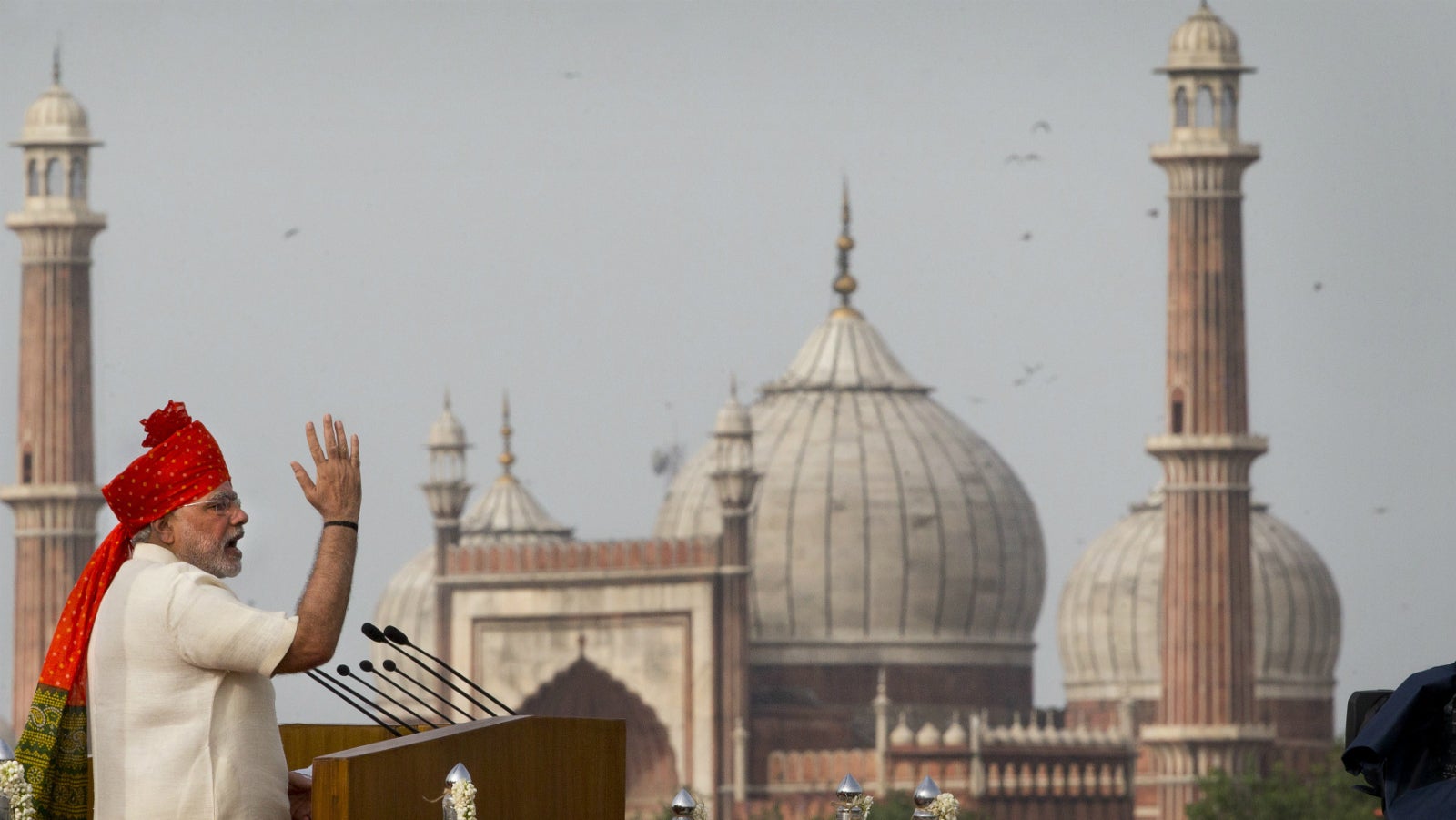A terror threat could get in the way of Narendra Modi’s big August 15 speech
Two years ago, Narendra Modi had famously shunned the bullet-proof enclosure from behind which Indian prime ministers have usually delivered the annual Independence Day speech at New Delhi’s Red Fort.


Two years ago, Narendra Modi had famously shunned the bullet-proof enclosure from behind which Indian prime ministers have usually delivered the annual Independence Day speech at New Delhi’s Red Fort.
With the exception of Rajiv Gandhi in 1988, prime ministers have almost always stood behind such a shield since 1985. Modi changed that practice in 2014, reportedly refusing to speak at all if he had to use it.
His move was seen as an attempt to ensure a direct connect with citizens in his flamboyant style, complete with a colourful turban. Since assuming power in 2014, Modi has used his Independence Day address every Aug. 15 to unveil key campaigns. These have included the Swachh Bharat (Clean India) campaign, a massive programme for financial inclusion, and the “Start up India Stand up India” initiative to help entrepreneurs.
But this year, India’s security agencies believe that the possibility of a terrorist attack—perhaps even using a drone—is “extremely high.” They have, therefore, reportedly made a strong pitch to India’s national security advisor, Ajit Doval, for a bullet-proof enclosure.
A communication intercepted by security agencies reportedly suggests a joint drone attack on the Red Fort by Pakistan-based terrorist outfits Lashkar-e-Taiba and Jaish-e-Mohammed. The concerns are also driven by evidence of a growing presence of the ISIL in south Asia. The recent Dhaka attack by the terrorist group has put Indian agencies on high alert.
Modi also faces a grave threat to life from terror outfits; since becoming prime minister, he has had some 1,000 commandos guarding him, unlike his predecessor Manmohan Singh, who had around 600.
Last year, some 5,000 personnel of the Special Protection Group—an elite commando force guarding the prime minister—Intelligence Bureau, paramilitary forces, and the Delhi police, had secured the Red Fort area ahead of Independence Day. Even drones were deployed to keep watch.